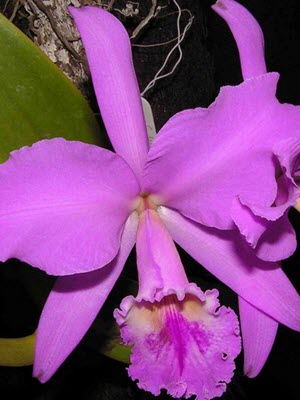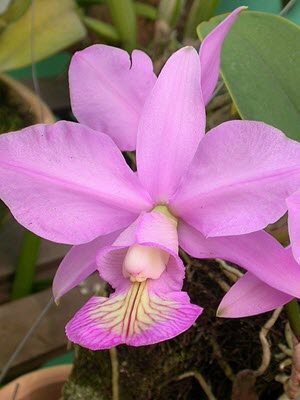Cattleya Orchid Care
Contents
The Cattleya orchids are famous for producing large, flamboyant flowers with striking colours and intricate shapes. A typical Cattleya orchid flower consists of two fringed petals and a third one that has developed into a showy lip with a fringed margin. All three petals are quite narrow and the lip is often decorated with markings and dots. At the base of the Cattleya orchid flower, the fringed petal margins fold into a tube. Each flower stalk grows from a so-called pseudobulb.
They belong to the genus Cattleya in the family Orchidaceae. This genus currently contains 42 described species and a vast array of hybrids has been created for the floral trade. The genus is under revision and the number of species might have changed at the time you are reading this. Cattleya hybrids can produce flowers that exceed 15 cm in length and you can get them in all colours except true blue and black. The number of flowers varies from just one to ten.
Cattleya orchids grow in tropical parts of the South American continent and up to Costa Rica in Central America.
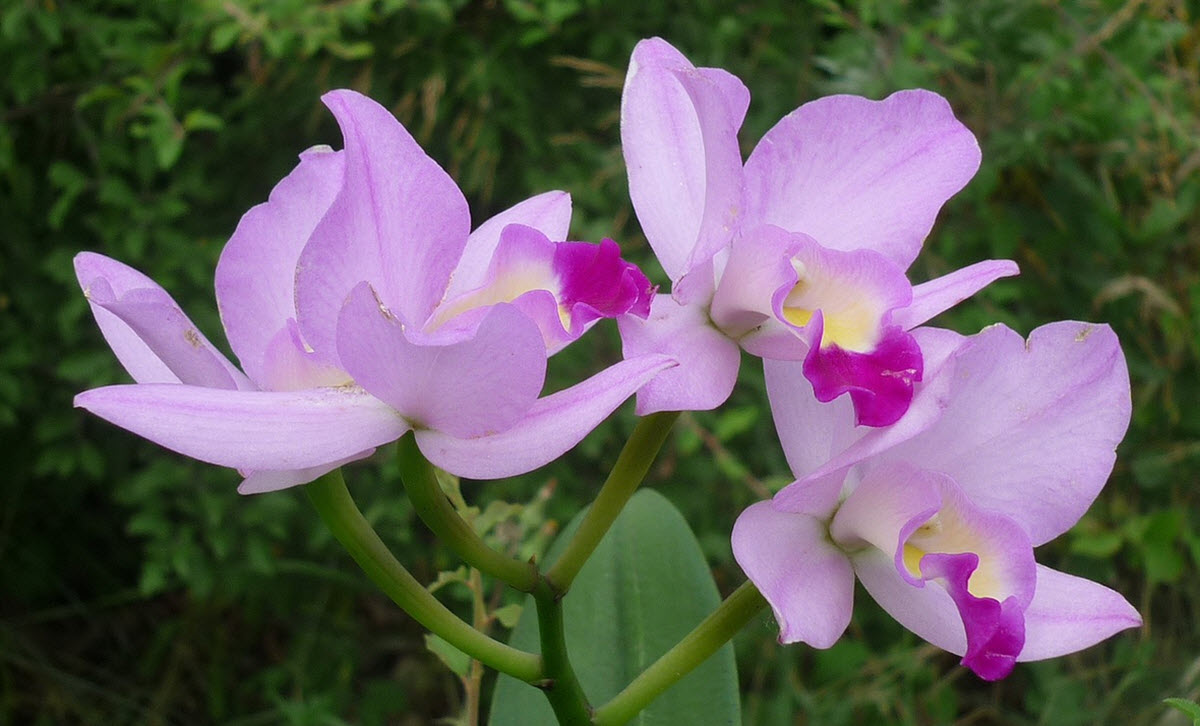
Orchid medium
If you want to keep a Cattleya orchid, it is very important to provide it with the right type of medium. This orchid is not used to soggy soil and must be given a well draining potting medium such as coarse fir bark or medium-coarse fir bark. Even with a well draining potting medium, overwatering can lead to root rot, and green mould and snow mould can start growing in the potting medium. These orchids are epiphytes which mean that their natural way of growing is by clinging to tree branches and similar. They are therefore ill-equipped to deal with a soggy medium.
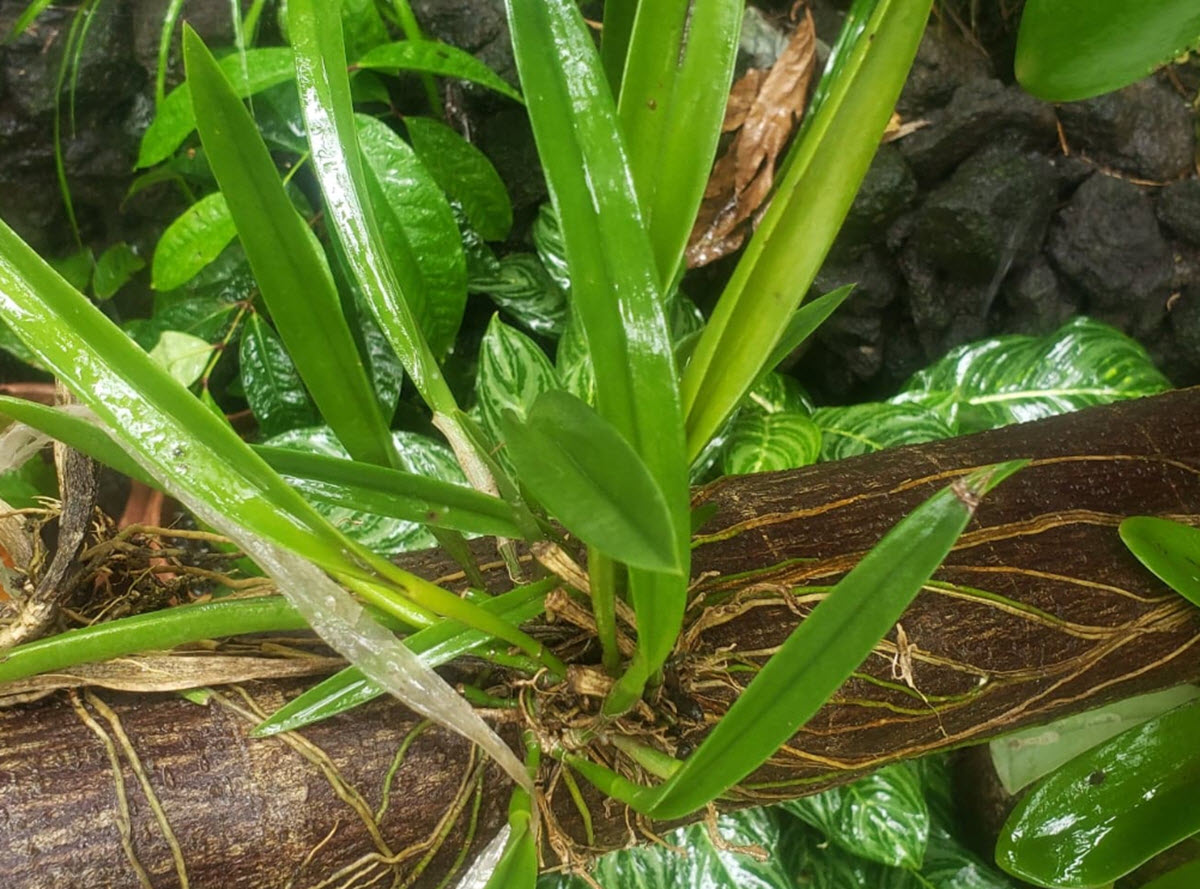
Brassiocattleya orchid growing on tree branch.
Temperature
As mentioned above, the Cattleya orchids come from tropical parts of South and Central America and they will therefore prefer the 75-85˚ F (24-29˚ C) temperature range during the day. The recommended night temperature is 60-65˚ F (15.5-18˚ C). If your orchid is well established and healthy it can survive occasional temperature drops or spikes, as long as you don’t make a habit out of exposing it to sudden temperature extremes. Being kept in the wrong temperature range or exposed to a lot of changes is very dangerous for these orchids.
Light
The Cattleya orchid will appreciate being shaded from the intense mid-day sun from 11 am to 3 pm. Ideally, place your Cattleya orchid where it will receive full sun during the morning as well as during the afternoon since these orchids need a vast amount of light do thrive. Leaves that lose their normal light green colour and develop a dark green shade is a warning sign that tells you that your Cattleya is not getting sufficient amounts of sun. An orchid exposed to too much intense sunlight will instead develop yellowing leaves.
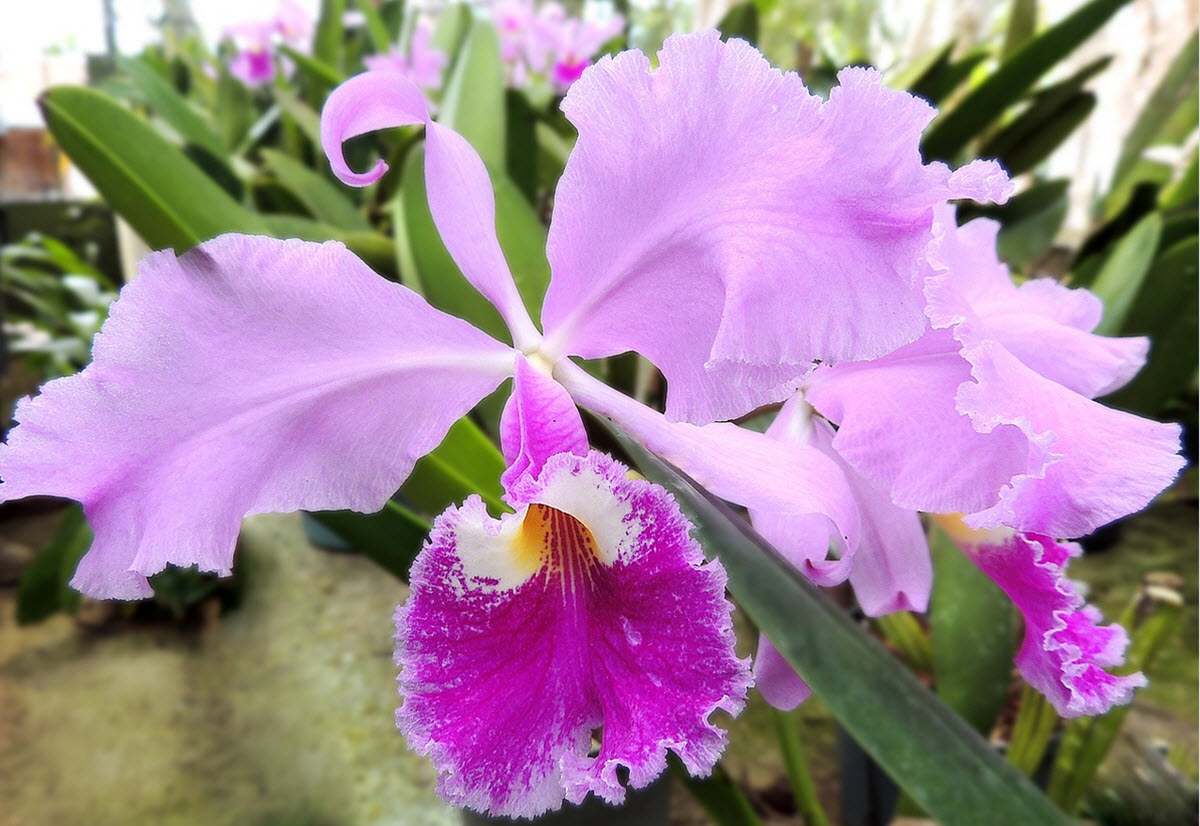
Watering
As mentioned above the Cattleya orchid is an epiphyte and clings to tree branches and similar in the wild. It is therefore important to let the planting medium dry out completely before you give your orchid any more water. In the wild, the water quickly vanishes from the tree branch until the next rain.
Nutrients
Your orchid will appreciate a high-nitrogen fertilizer (25-9-9) year-round without any resting period. Giving the orchid 1 teaspoon each month will suffice in most situations. Giving all the fertilizer in one serving is not recommended, since this is not how the orchid would receive nutrients in the wild. Split up the dose and feed your Cattleya now and then instead; this is much better for the plant.
Repotting Cattleya orchids
Every 2-3 years, a Cattleya orchid normally outgrows its pot and needs to be repotted. Repotting more frequently than this will not benefit the plant; it will actually only be disturbed. There are of course situations where you might have to repot a Cattleya even though it has not yet outgrown its pot, e.g. if the potting medium becomes highly deteriorated or stops draining well. An overwatered or poor-draining potting medium can turn sour or develop a mould infestation. Such a medium must be promptly discarded and replaced.
Cattleya Species

Picture of Guarianthe aurantiaca (Syn Cattleya aurantiaca). Picture by orkidehuset.se
Cattleya Care tips!
You can use a sharp knife to cut the flower spike all the way down the stem when your Cattleya has lost its final flower. Melted candle wax can be used to seal off the wound and help your Cattleya heal. Orchid growers have also had success with applying cinnamon powder to the fresh wound.
In Other Languages: Cattleya på Svenska


